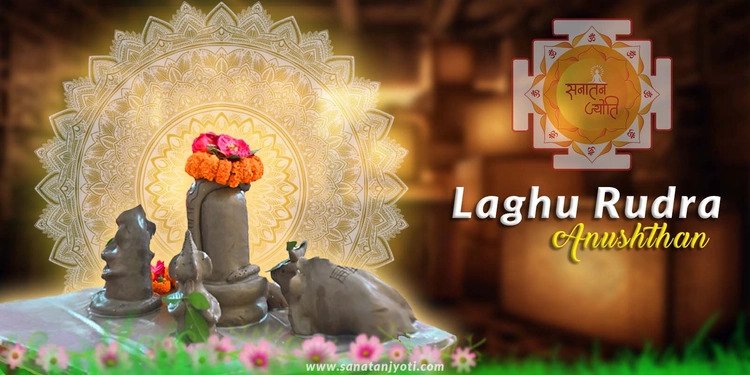The eleven recitations of Ekadashini Rudri are called Laghu Rudra Path.
In the Laghu Rudra Anushthan, it is completed together by eleven priests each reciting one Rudri, or it can also be completed by one priest performing one Ekadashini recital daily for eleven days.
Why should one perform Laghu Rudra Anushthan?
Laghu Rudra Abhishek should be performed by all those who are suffering from incurable diseases and want to get relief from them.
If a person faces tension and mutual conflicts in family relationships and wants peace and freedom from conflicts in life, then this worship ritual establishes happiness and peace in their family life.
If a person is continuously facing failure in business, job, or legal matters, then that person should organize the Laghu Rudra Rudrabhishek Anushthan to achieve success.
Benefits of Laghu Rudra Anushthan
This ritual removes negative energy present in life and increases positivity.
1. Physical and Mental Health Benefits: It provides relief from incurable diseases and improves health. Mental stress, anxiety, and depression reduce. Negative energy is removed and new energy flows within the person. It increases longevity and grants a long life.
2. Economic and Professional Benefits: Success is achieved in business and job. Economic condition improves and opportunities for wealth increase. Relief from debt and financial difficulties is obtained. Respect and promotion are received at the workplace.
3. Benefits in Family and Marital Life: Family conflicts and tension are removed. Sweetness comes in husband-wife relationships. Obstacles in childbearing are removed. Improvement is seen in the progress and education of children.
4. Spiritual and Karma Improvement Benefits: A person’s sins are destroyed, and positive deeds increase. Spiritual purification and progress take place. The sense of discipline and peace grows within the person. It helps in attaining liberation and freedom from the cycle of rebirth.
5. Benefits of Protection and Obstacle Removal: Crises and accidents in life are averted. Protection is gained from enemies and opponents. Vastu defects and planetary faults are removed. Happiness and prosperity remain in the home and family.
Method of Laghu Rudra Anushthan
Laghu Rudrabhishek is a highly powerful and energetic Vedic ritual, performed to obtain the grace and divine blessings of Lord Shiva. The conduct of this ritual must be carried out by qualified priests with complete devotion, purity, and according to the prescribed scriptural procedures.
In this ritual, eleven priests together recite the Rudra chant simultaneously, or one priest continuously chants the Rudrasuktam with proper rituals for eleven consecutive days. The worship performed by this method not only paves the way for spiritual progress but also grants the practitioner happiness and peace, mental balance, personality development, and spiritual stability in life.
1. Purification of the Place and Practitioner
The worship begins with the purification of the place and oneself. By sprinkling Gangajal or sacred water, the environment is made sattvic (pure). This generates positive energy in the place and prepares the practitioner’s mind to be worthy of the worship.
2. Kalash Installation
After purification, a sacred kalash (pot) is installed, which is considered a symbol of the presence of the Divine. The kalash is filled with clean water, mango leaves, kusa grass, and a coconut, and worship is performed according to the prescribed rituals.
3. Invocation of Lord Shiva
Through the chanting of Rudra Sukta mantras, Lord Shiva is invoked. This stage connects the practitioner with the Shiva tattva (principle) and fills the worship with spiritual energy.
4. Shiva Lingam Worship
After invocation, bilva leaves, shami leaves, flowers, incense, lamps, sandalwood, and panchamrit (milk, curd, ghee, honey, and pure water) are offered on the Shiva Lingam. Each item holds special symbolic and spiritual significance.
5. Abhishek Process
This stage is the main part of the ritual. The Shiva Lingam is bathed with various sacred substances like Gangajal, milk, honey, ghee, perfume, etc. During the abhishek, special mantras are recited, which spread energy and purity.
6. Aarti and Havan
After the abhishek, aarti and havan (fire ritual) of Lord Shiva are performed. The light of the lamps, the sound of bells, and the devotion-filled atmosphere lead the worship towards completion. This moment creates a deep spiritual connection between the devotee and the Divine.
7. Distribution of Prasad
Finally, prasad is distributed, which symbolizes the grace of the Lord. This prasad serves as a means to absorb the energy of the worship and share divinity among all present.





